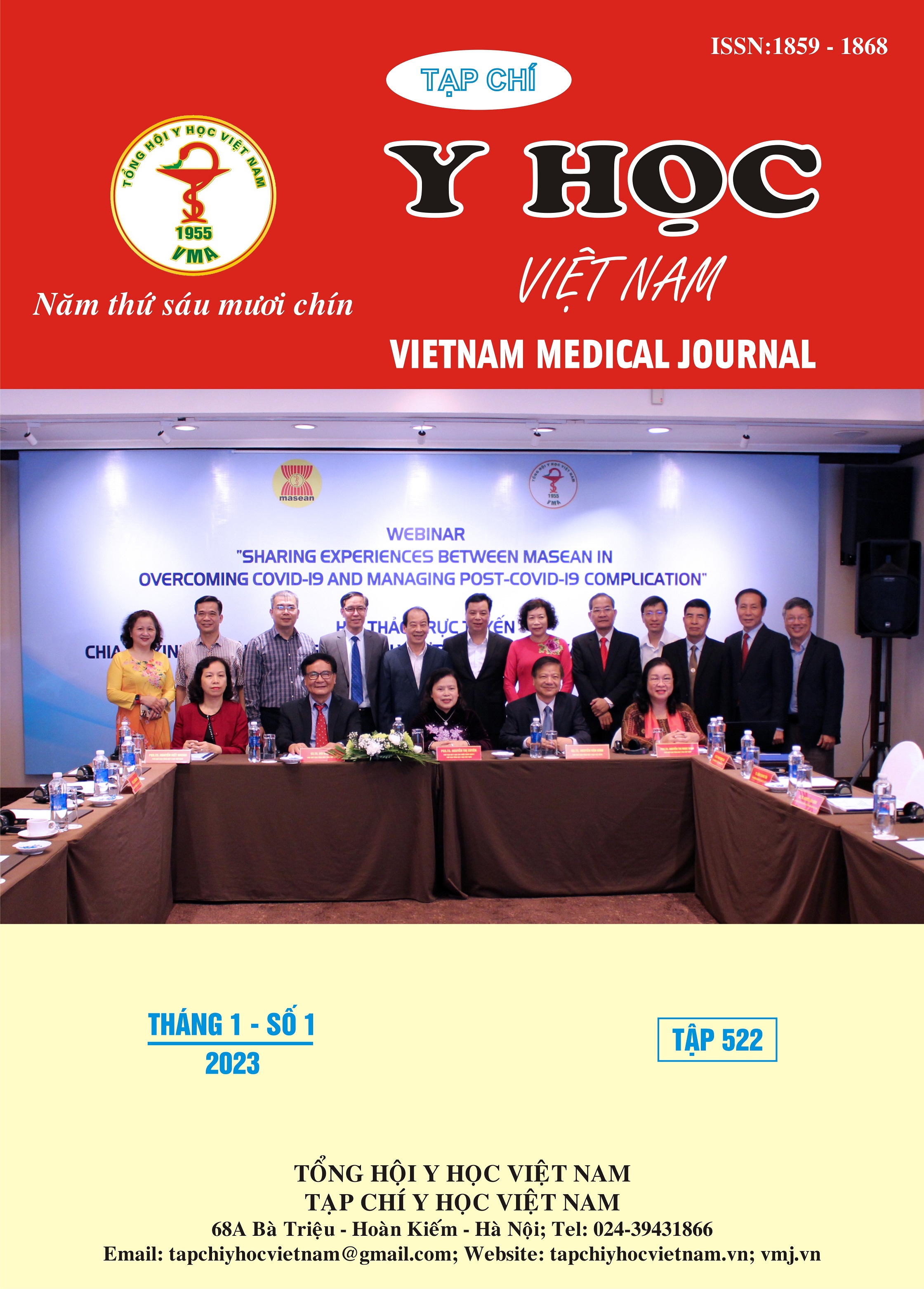CLINICAL CHARACTERISTICS, X-RAY OF LOWER THIRD MOLAR ACCORDING PELL AND GREGORY CLASSIFICATION AT CAI NUOC GENERAL HOSPITAL
Main Article Content
Abstract
Background: Describe the clinical characteristics, X-ray of Lower third molar according to Pell, Gregory classification of patients who came for examination and treatment at Cai Nuoc General Hospital. Materials and methods: Descriptive study, clinical intervention Patients with deviated, proximal lower wisdom teeth with indications for surgery were evaluated through clinical examination and panoramic X-ray film with The characteristic of the angle measure by the straight line passing through lower third molar and the adjacent second molar axis (determined between the occlusal surface and the root cleft) ranges from 100 to 90 0 (classified according to Winter's tooth axis). Adjacent teeth are not lost, do not have large breaks, do not have large fillings and do not wear orthodontic appliances… - The overall health is sufficient to respond to surgery and laboratory tests within normal limits to allow progress. surgery. Results: Study on 99 cases lower third molar of treated surgically at Cai Nuoc General Hospital - Ca Mau - 90.9% of Lower third molar are present in the mouth. - Teeth 38 accounted for 55.6% and 48 accounted for 44.4%. - Teeth in position II accounted for 92.9% and position B was 83.8%. - Teeth in the study had an average difficulty of extraction accounting for 77.8%. - Teeth related to the lower canal on radiographs accounted for 30.3%. Conclusion: Diversity in position, shape, size, often stuck between teeth 7 and branches up to the lower jaw bone or deep in the bone, abnormal roots in number and morphology greatly affect the methods and techniques of lower third molar extraction.
Article Details
Keywords
Lower third molar, x-ray, clinical
References
2. Nguyễn Thị Mai Hương (2018), Đánh giá kết quả phẫu thuật nhổ răng khôn hàm dưới lệch ngầm có sử dụng Laser công suất thấp Luận án Bác sĩ chuyên khoa II, Trường Đại học Y Dược Huế.
3. Nguyễn Minh Khởi (2019), Nghiên cứu đặc điểm lâm sàng, X quang và đánh giá kết quả phẫu thuật nhổ răng khôn hàm dưới bằng tay khoan quay và máy piezotome ở bệnh nhân tại Trường Đại học Y Dược Cần Thơ, Luận văn Thạc sĩ Y học, Trường Đại học Y Dược Cần Thơ.
4. Lê Thị Thu Trang, Tạ Tố Trân, Nguyễn Thị Bích Lý (2015), "So sánh hiệu quả của Amoxicillin theo hai phác đồ phòng ngừa và điều trị trong phẫu thuật răng khôn dưới", Y học Thành phố Hồ Chí Minh, Tập 19, Số 2, tr. 249 - 253.
5. Chang SW, Shin SY, Kum KY, Hong J (2009), "Correlation study between distal caries in the mandibular second molar, the eruption status of the mandibular third molar in the Korean population", Oral Surg Oral Med Oral Pathol Oral Radiol Endod, Vol. 108 (6), pp. 838 - 843.
6. Eshghpour M. (2014), "Pattern of mandibular third molar impaction: A cross‑sectional study in northeast of Iran", Nigerian Journal of Clinical Practice, Vol. 17 (6), pp. 673 - 677.
7. He Y, Chen J, Huang Y, Pan Q, Nie M. (2017), "Local Application of Platelet-Rich Fibrin During Lower Third Molar Extraction Improves Treatment Outcomes", J Oral Maxillofac Surg, Vol. 75, pp. 2497 - 2506.
8. Gintaras J, Povilas Daugela (2013), "Mandibular Third Molar Impaction: Review of Literature and a Proposal of a Classification", Journal of Oral & Maxillofacial Research, Vol. 4, no 2, pp. 2 - 12.
9. Qu HL, Tian BM, Li K, Zhou LN, Li ZB, Chen FM. (2017), "Impact of asymptomatic visible third molars on the periodontal pathology of adjacent second molars: a cross-sectional study", Journal of Oral and Maxillofacial Surgery, Vol. 75 (10), pp. 2048 - 2057.


